9+ SAMPLE Non Profit Fundraising Plan
-
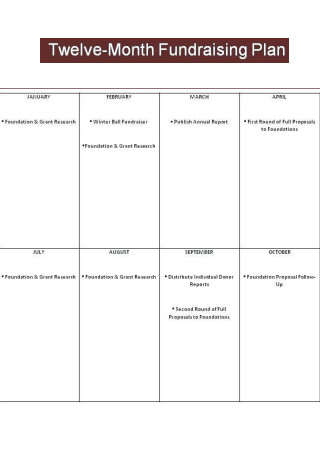
12-Month Nonprofit Fundraising Plan
download now -
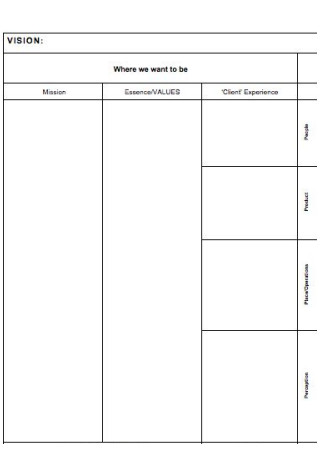
Blank Nonprofit Fundraising Plan
download now -

Nonprofit Fundraising Calendar Plan
download now -

Nonprofit Fundraising Event Plan
download now -
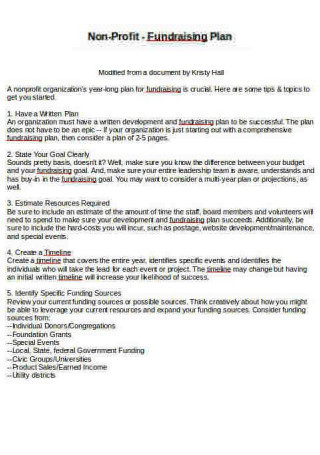
Nonprofit Fundraising Plan Guidelines
download now -
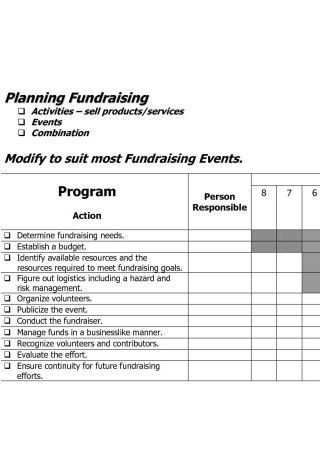
Nonprofit Fundraising Plan Template
download now -
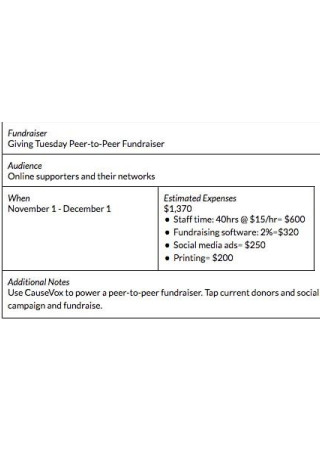
Peer-to-Peer Nonprofit Fundraising Plan
download now -
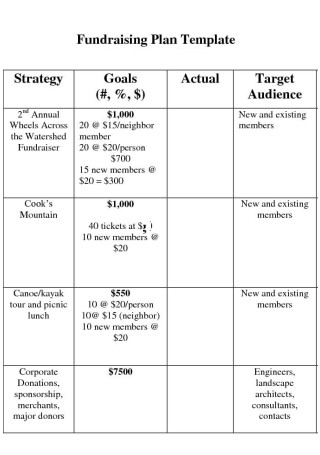
Simple Nonprofit Fundraising Plan
download now -
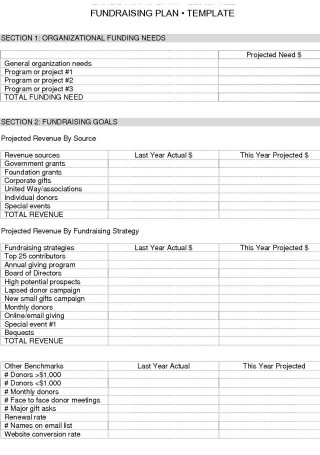
Strategic Nonprofit Fundraising Plan
download now -
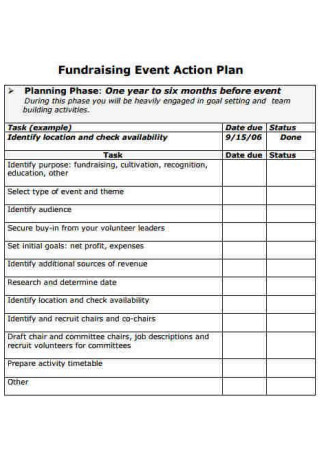
Nonprofit Fundraising Event Action Plan
download now
FREE Non Profit Fundraising Plan s to Download
9+ SAMPLE Non Profit Fundraising Plan
What Is A Non-Profit Fundraising Plan?
What Is Non-Profit Fundraising?
Types of Non-Profit Fundraising:
Strategies to Take a Nonprofit Fundraising Plan to the Next Level:
Steps for the Success of a Non-Profit Fundraising Plan:
FAQs
How should we ask for donations?
Are there any rules about how much fundraising a non-profit has to do?
How can I give to a non-profit?
What Is A Non-Profit Fundraising Plan?
A non-profit fundraising plan is a written document that exhibits a preparation for an organization’s fundraising efforts throughout a set time period (regularly, on one fiscal year).
This plan usually comprises both financial goals and a non-profit marketing plan that will be used to -achieve these goals.
What Is Non-Profit Fundraising?
Non-profit fundraising is the continuing progression of soliciting donations or voluntary funds to help an organization grow and meet the needs of the community being served. The fundraising network can contain of both businesses and individual donors.
The fundraising methods and possibilities available these days are endless thanks to modern technology and the ability to reach potential donors on a global scale. Over the years, non-profits could only reach out to solicit donations by making calls to donors, sending out donation forms and envelopes, or hosting in-person fundraising events.
Types of Non-Profit Fundraising:
Here are some of the most standard types of fundraising that nonprofits make use of today:
Strategies to Take a Nonprofit Fundraising Plan to the Next Level:
Launch Donor Recognition Programs
The best way to engage the existing donors and to make them into repetitive donors is to thank them. Donor recognition programs call attention, both publicly and privately, to the people who help the organization realize its impact. Moreover, some common reasons why donors support fundraising organization: they believe in the mission; someone they love cares about the mission; they feel it’s their duty; they’ve been personally impacted by the cause; they want to feel good about themselves and; they want to leave a legacy.
Donors, especially major donors, love being visibly recognized for their charitable efforts. The problem is that most organizations don’t have donor recognition programs in place to sufficiently recognize their contributors.
Get to Know Your Donors
Conceivably, the best strategy for assembling donors is to get to know them. These days, an increasing number of supporters are expecting an individualized approach when it comes to their relationships with organizations. They don’t want to see the same message over and over. As people who are investing money in a cause, what supporters really want is for the nonprofit to get to know them and present the cause in a way that’s convincing to them. In addition, making sure to track valuable donor information is very essential, such as their: biographical and contact information; interaction history including donations made, event attendance, + volunteer work; household, business, and other bidirectional relationships; interests; social media accounts and; demographics.
Non-profit organizations can make rich donor profiles by augmenting them with customizable fields, notes, email activity, document attachments, and more. By gathering enough information, nonprofits can get to know their donors better and section them into criteria-based lists, targeting them with individualized outreach strategies that feature more related content, such as donation appeals that match their last donation amount or their current income levels, direct mail, personalized email marketing, even texting campaigns.
Exert Influence on Public Opinion
Bringing about policy change is a bigger priority than raising funds according to some nonprofits. Exerting influence on public opinion is the more secure way to affect policy changes with the legislators at all levels of office. There are several types of organizations that seek to sway public opinion, such as: healthcare organizations; human rights organizations; animal rights organizations; environmental protection organizations; political groups and; international, foreign affairs, and national security organizations.
To influence public opinion, the marketing must be multi-dimensional. It can’t only be pointed toward the legislators. It must also be engaged toward the public and to the press, who have the ability to bring the story and the campaign to an even wider audience. When the public rises up, the press covers it. When the public and press are working toward the same goal, politicians and decision-makers listen.
Write a Clear Case for Support
Make a clear reason why supporters should contribute their hard-earned money or spend their valuable time with the organization. There is a lot of noise out there, one might rise above the din to get noticed. When making appeals, be sure to take in an impact statement that shows the potential donor how their money will be spent and what that gift will achieve, either for the organization or the people being served. A case for support or impact statement should cover the following key points:
- A clear call-to-action and information on ways supporters can participate.
- Reason for raising money and a breakdown of how the funds will be used.
- A list of events and fundraisers related to the campaign that donors can attend.
- How the project will impact the community and people to serve.
- Having a detailed case for support is vital because it shows donors that you have a direction and plan for their money.
Not only can the case for support inspire donors, it can also be a valuable tool for your staff and volunteers; they can use this resource to help reinforce their pitch when they ask potential donors to donate.
Digital Fundraising Strategies for Nonprofits
According to research, more than 50% of donors prefer to give online. It is domineering to comprise virtual fundraising strategies when considering an overall fundraising plan. There are a few digital techniques available to increase online engagement with supporters and encourage a culture of online giving.
Tug that website. A nonprofit’s website is an essential part of its overall digital fundraising strategy. As such, the goal for any nonprofit website is for it to be persuasive, informative, and to serve as a useful tool to supporters toward donation.
Master video. This has been one of the fastest growing and most used mediums in nonprofit communication and advertising. Live video is a great way for supporters to take a peek inside a day-to-day operations. Platforms like Facebook, Instagram, Snapchat, YouTube, TikTok, and others prioritize video streaming and will notify followers when going live. This is a doable and inexpensive way to reach the masses and increase conversion rates.
Split-test online donation pages. The best digital fundraising operations are watchful about their online forms and design them in ways that encourage the audience to convert. The optimal donation page differs from nonprofit to nonprofit, but the goal is to make the experience as expedient as possible for donors so they’re more likely to contribute. Finding the content and design of the optimal page can be a moving target.
Improve social media fundraising strategy. If the fundraising strategy doesn’t include social media appeals you might be leaving some money on the table. Social networks are outstanding places to identify potential donors and start engaging them on their terms. The beauty of social media is that there are various sites to help with fundraising efforts. Each of these sites has unique capabilities, allowing to share messages in unique ways.
Be mobile responsive. Accepting mobile donations is the highpoint of convenience because it allows the supporters to contribute to the organization wherever they are and when the moment presents itself. Optimize your mobile giving channels by ensuring your online donation forms are easy to use from mobile devices, especially smartphones. Most modern web platforms have this capability built in when designing forms.
Artificial Intelligence and Smart Engagement. Machine learning can examine previous donor contribution levels and mix that information with current demographics, added data like income levels and affinity group interests, and recommend to you a fundraising appeal strategy that is unique to the donor. This makes email marketing efforts much more personalized and more likely to transform.
Steps for the Success of a Non-Profit Fundraising Plan:
Step 1: Identify Fundraising Specialist
The fundraising specialist can be a member of staff, volunteer, or consultant who will have accountability for emerging a fundraising plan. Just the process of taking this step will determine commitment to fundraising.
Step 2: Update Vision and Mission Statements
It is imperative that these statements reflect the current reality of the organization. Evidently written statements not only ensure that the organization knows its reason for being, but also helps others understand why it deserves a donation.
Step 3: Assess the World outside the Door
The expansion of a list of your organization’s key populations (markets, constituents, stakeholders) will help develop your targets. Assess these groups to see how your organization is seen in the community. The result will help to explain to donors what is needed and how those needs can be met.
Step 4: Assess the World inside the Organization
It is critical to assess your own assets: skills, reimbursement, training, quality control, internal management resources available, commitment, partners, information systems, financial viability, among others.
Step 5: Evaluate the Products, Services, and Programs
Create a description of current/future program activities. The next step is to determine what products and services might be extended, what constituencies are involved, geographic range, impact assessment, special capabilities, networks to be leveraged, and resources (manpower and financial) required.
Step 6: Make the Organization More Visible
The long-term strategy is to make sure that the organization is solid within the community. Having a brief, operative description is essential for quick, positive impressions. There are a lot of ways to develop the public phase of a campaign, but the lesson is to make sure that there is a plan, and that the development team works the plan.
Step 7: Gather Descriptive Materials
Review existing material about the organization: brochures, newsletters, press releases, annual reports, direct mail, invitations, news clippings, videos, websites, and social media. Utilize appropriate materials and create new ones if needed.
Step 8: Start Raising Funds
Thoroughly review sources of existing budget: fees, grants, memberships, solicitation, special events, products, memorials, corporations, campaigns, and crowd funding. Work to ensure that the budget is supported by more than one or two sources of income. Doing this will help identify strong efforts and areas needing more work.
FAQs
How should we ask for donations?
Gone are the days when non-profits could count on solely on mailed-in donations or cash contributions at events. Nowadays, multi-channel fundraising is all the rage—and for worthy reason.
You can ask for donations in a diversity of ways, including: in person; over the phone; through letters; with emails; via social media sites; on your website and online donation form; at events; and more.
Are there any rules about how much fundraising a non-profit has to do?
Yes. The public charities have to receive at least a third of their support from the general public. This means that a non-profit organization can’t rely too heavily on contributions from staff members, founders, or board members. As an alternative, start asking for donations from individuals, companies, and foundations.
How can I give to a non-profit?
When someone talks about giving to a non-profit, monetary donations are the first types of contributions that come to mind. However, there are other ways that a supporter can give back to a non-profit:
Volunteer time. If you want to get on the ground and work alongside non-profit staff members, give time.
In-kind donations. Often used by companies, in-kind donations are products or specific services that non-profits can obtain. If a non-profit project requires certain skills or equipment, consider donating yours.
Generally, there is a lot to be won by counting crowdfunding into organizations’ current set of fundraising tools—both for individual organizations as well as for the development sector as a whole. Non-profit fundraising is already part and parcel to many organizations’ and individuals’ wish to make the world a better place and help people around the globe in improving their lives. Its obvious benefit is raising money. Crowdfunding is recognized with overcoming financing barriers to small grassroots projects that don‘t have admission to banks and large donors.
Additionally, once an organization has gained some experience in crowdfunding, it can also branch out into crowdsourcing activities effortlessly by participating in external resources and concepts like volunteering to support project work. Non-profit organizations and charitable projects usually claim an existing network of supporters that they can activate for numerous purposes, including fundraising campaigns.
